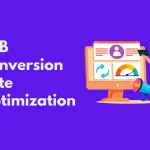224 billion dollars – that’s the amount that businesses spent on advertising in 2018.
With such staggering amounts being invested in marketing, how can a business possibly stand out?
How can your business rise above the noise?
How can you attract and engage new customers without plundering your bank account?
Simply put, how can you grow your business without spending ridiculous sums of money on advertising?
Answer: Growth Marketing.
In this post, we’re going to break down the what, why, and how of growth marketing. We’re going to show you why growth marketing is so effective, how it works, and how you can begin implementing it in your business.
Ready?
Let’s dive in.
Table of Contents
What Is Growth Marketing?
Growth marketing is traditional marketing on steroids. Growth marketing makes your ideal customers love you so much that they buy from you again and again and become evangelists for your brand.
While traditional marketing tends to focus on the top of the funnel, growth marketing focuses on every part of the sales funnel.

Growth Marketing takes the standard model of marketing and then adds layers to it. These layers include things like:
- High-value blog posts
- Creative ad copy
- Technical analysis of the user’s experience
- Conversion rate optimization
- Data-driven email marketing
- A/B testing
- Virality
Traditional marketing typically involves strategies that are focused on raising awareness and acquiring new users. Growth marketing seeks to engage people at every stage of the funnel:
The goal is not just user acquisition. It’s also to retain customers and turn those customers into passionate advocates for the company. For this to happen, growth marketers must focus on much more than just the top of the funnel. They focus on every stage of the customer journey.
For those new to the concept, growth marketing for beginners starts with understanding how to use data, creativity, and constant experimentation to enhance each stage of the customer journey. It’s more than just attracting new customers—it’s about engaging them deeply, retaining them over the long term, and turning them into enthusiastic brand advocates who drive organic growth.
Mike Volpe, former CMO and founding member of Hubspot, puts it this way:
Growth marketing is removing the boundaries of marketing to enable every aspect of the customer experience to focus on attracting more engaged customers.
Growth marketers use data and experimentation to improve every aspect of the customer experience. They constantly test their methods and strategies, always looking for a better way to do things. Example: A website feedback tool helps you collect feedback and sentiment ratings about your website or web-based app to take informed decisions.
In this short video, Sujan Patel provides a helpful breakdown of growth marketing. I particularly like how he says:
Watch the video for more…
What Is The Difference Between Growth Marketing and Traditional Marketing?
The reality is that traditional marketing channels are expensive and saturated. And while new marketing channels are constantly popping up, it’s usually not long before these channels are full of competition.
This graph by James Currier illustrates this issue very well:

Many traditional marketers miss the opportunity to get in on these channels. Growth marketers, on the other hand, are able to identify and utilize these channels before they become too competitive.
Traditional marketers focus primarily on customer acquisition. The problem, however, is that simply acquiring customers is not enough. Many companies have high acquisition costs due to conversion issues. Because their acquisition costs are so high, it’s hard for them to be profitable.
The Key of Profitability
In her Internet Trends Report for 2019, Mary Meeker points out that when Customer Acquisition Cost (CAC) exceeds Customer Lifetime Value (LTV), it creates an unsustainable business model. If a business wants to grow, they need to find a low CAC, high LTV business model.
Or to put it another way, the key to profitable, sustainable growth is retention. Retention allows a company to make more money with the same number of clients, which then overcomes acquisition costs.
Annie Katrina Lee, who leads content marketing at Pinterest, puts it this way:
Good growth teams care about driving acquisition. Great growth teams care about acquiring users who will stick around.
Growth marketers focus on providing a superior experience for the customer at every step of the funnel, which ultimately leads to higher retention rates. They want to create the “wow!” effect with their customers.
Focusing on building customer relationships also leads to much higher referral rates. This allows a company to grow organically instead of having to spend money on advertising.
The following table lays out more of the differences between traditional marketing and growth marketing:
| Traditional Marketing | Growth Marketing |
| Focused on the company | Focused on the customer |
| Prizes perfection | Prizes speed |
| Relies on campaigns and tactics | Relies on rapid testing and execution |
| Decisions made based on opinion | Decisions made based on data |
| Driven by an annual plan | Driven by agile marketing techniques |
| Goal of acquisition | Goal of acquisition, retention, and referral |
| Supported by a big budget | Starts with a small budget and then scales |
| Key metric is revenue | Key metrics are profit and lifetime value |
What Is The Difference Between Growth Marketing and Growth Hacking?
Growth hacking emerged in the high-pressure, fast-paced startup world as a way to cost-effectively, creatively, and rapidly scale up a business. Growth marketing is closely related to growth hacking.
A growth hacker’s North Star is growth. As Sean Ellis put it, “A growth hacker is a person whose true north is growth. Everything they do is scrutinized by its potential impact on scalable growth.”
Like growth hackers, the growth marketer’s true north is also growth.

However, there are also some key differences between growth hacking and growth marketing.
Growth hackers tend to focus on rapid growth, while growth marketers look for sustainable growth.
Growth hackers are biased toward using technology (programming / making software or app changes) to achieve growth, while growth marketers tend to focus more on using technology to develop relationships with engaged customers.
Growth hackers utilize technical skills (programming, UX design) to make a product that fits the customers, while growth marketers focus on the branding and positioning of existing products.
Growth hackers use data to understand how customers use their products (software or app), while growth marketers use data to understand how customers behave on digital channels.
The growth marketer works hard to find segments in the audience where there is substantial product-market fit. In other words, they’re looking for people who will really like their product. Once they’ve identified those key segments, they work to establish strong relationships with those customers.
Examples of Growth Marketing
 Using strategic, creative thinking, AirBnB was able to massively grow their user base. They came up with the unconventional idea of offering free professional photography services to every person listing a house on their site. They created a superior experience for their customers, who then told their friends about the site, resulting in huge growth.
Using strategic, creative thinking, AirBnB was able to massively grow their user base. They came up with the unconventional idea of offering free professional photography services to every person listing a house on their site. They created a superior experience for their customers, who then told their friends about the site, resulting in huge growth.
Notice that their growth wasn’t primarily the result of traditional marketing methods or campaigns. Rather, it was the result of engaging with customers at all stages of the funnel.
 Dropbox used similar tactics to achieve 3,900% growth. Tapping into the power of a referral program, the SaaS company offered an extra 250MB of storage to people who invited their friends to use the platform. They also offered the same amount to those who accepted the referral. By 2010, Dropbox users were sending out a staggering 2.8 million invites per month to their friends. Essentially, Dropbox’s customers were doing all the marketing. The result was huge growth.
Dropbox used similar tactics to achieve 3,900% growth. Tapping into the power of a referral program, the SaaS company offered an extra 250MB of storage to people who invited their friends to use the platform. They also offered the same amount to those who accepted the referral. By 2010, Dropbox users were sending out a staggering 2.8 million invites per month to their friends. Essentially, Dropbox’s customers were doing all the marketing. The result was huge growth.
Like AirBnB, Dropbox went beyond traditional marketing strategies to fuel their growth. They performed strategic experiments, landed on a winner (giving out free storage), and then doubled down on that winner.
Do I Need Growth Marketing?
How can you know if you need growth marketing in your business?
Growth marketing is for you if:
You want to grow aggressively and quickly. Growth marketing enables you to grow much more rapidly than traditional marketing.
You can’t afford huge marketing campaigns with unknown ROIs. Growth marketing starts with a small budget and uses relentless testing to ensure that the money invested ultimately generates a significant ROI.
You want to ensure your marketing efforts are effective. Growth marketing relies heavily on data and testing to ensure that all marketing efforts bring about positive results.
Your business isn’t growing fast enough, your acquisition costs are rising, or your business is stagnating. Because growth marketing focuses on the entirety of the sales funnel, it results in holistic growth. Customer lifetime value increases, acquisition costs decrease, and profits rise.
Customers don’t come back and don’t generate referrals. Growth marketing places a strong emphasis on customer retention. In order to retain customers, you need to provide them with an outstanding experience. When you wow your customers, they refer others to you. You might consider running a referral program by using tools like Referral Factory or similiar.
If you fit any of the above categories, then you need a growth marketer. You need someone who can help your business grow rapidly while utilizing a smaller budget. You need a marketer who can look at your business and see what’s possible.
The reality is that creativity always trumps the budget.
What Does A Growth Marketer Do?
A growth marketer performs a number of specific tasks, all of which benefit businesses in different ways.
Identify New Business Growth Opportunities
Growth marketers specialize in helping businesses identify new, strategic, creative ways to grow. They look beyond traditional marketing methods to pinpoint unique growth strategies. As businesses try to navigate new, uncertain environments, growth marketers provide a steady hand.
Find Creative and Cost-Effective Methods For Scaling
Scaling a business using traditional marketing methods can be incredibly expensive. Growth marketers are able to circumvent traditional marketing methods. Using data analysis, experimentation, and creativity, they can help a business scale in ways that are cost-effective.
Find The Shortcut To Customer Acquisition
AirBnB discovered that offering free photography was a shortcut to acquiring new customers. Dropbox ramped up their customer acquisition by offering free storage. Growth marketers are able to look at a business and identify ways to increase the speed of customer acquisition without significantly raising costs.
Discover New Niche Markets and Audience Segments
The best growth marketers can help a business find new niche markets and audience segments that aren’t already saturated with competitors. Because the markets and segments aren’t overcrowded, customer acquisition cost is significantly lower.
Build A Sustainable Growth Plan
A sustainable growth plan has retention at its core. If retention isn’t at the core, a business won’t be able to overcome its churn rate. It will lose customers as fast as it gains them. A growth marketer is able to create a sustainable growth plan for a business that focuses on retention.
Create Profitable Growth
There’s a massive difference between growth and profitable growth. By focusing on increasing Customer Lifetime Value, the growth marketer is able to help businesses achieve profitable growth.
Find Product-Market Fit
If your product doesn’t resonate with your audience, you simply won’t sell much. A growth marketer helps businesses find the perfect audience for their products. They are able to identify the sweet spot where a product and the needs of a particular audience segment intersect.
One way growth marketers determine if a product has market-fit is by using the “40% rule” (developed by Sean Ellis). A survey is sent to customers with the following questions:
How would you feel if you could no longer use [product]?
Very disappointed
Somewhat disappointed
Not disappointed (it isn’t really that useful)
N/A – I no longer use [product]
If over 40% of customers say they would be very disappointed, it’s likely the business has a “must have” and they can build sustainable, scalable acquisition growth.
Outline The Critical Components Of The Business
Before a business can enter the rapid experimentation phase of growth marketing, they must have certain critical components in place:
The Business Model Canvas – The Business Model Canvas is a one-page template that visually describes what a particular business does. It includes things like key partners, key activities, value propositions, and customer segments. The Business Model Canvas puts the heart of a business on a single page. A growth marketer can help a business identify each of the key elements in the canvas.
The Value Proposition Canvas – The Value Proposition Canvas allows a business to identify their core customers, as well as the key value they provide for their customers. A growth marketer can help a business get crystal clear on their value proposition, which then enables the business to market more effectively.
Personas – A persona is a fictional individual who represents a core customer for a business. Developing customer personas allows a business to think clearly about who is in their audience and what they want. Personas allow businesses to more easily market to their customers. Growth marketers can help businesses effectively shape their customer personas. Personas flow out of the Business Model Canvas and the Value Proposition Canvas. They allow a business to effectively communicate the right value proposition to the right customer segments, and so be more effective.
The Pirate Funnel – The Pirate Funnel is a customer-lifecycle framework that was developed by Dave McClure, and is useful for mapping out and optimizing the marketing funnel. The general idea is that users go through a similar process for every product: Awareness, Acquisition, Activation, Revenue, Retention, Referral. A growth marketer can help a business determine which actions customers take at each stage of the funnel and which metrics to measure.
Implement A Process Of Rapid Experimentation
Once a business has the core components listed above in place, it’s time to begin the process of rapid experimentation. A growth marketer is able to help businesses implement the following steps:
1 – Gather ideas – The first step in experimentation is to gather ideas for growth experiments. These growth ideas will include hypotheses that will be tested.
2- Rank ideas – Once experimentation ideas have been gathered, it’s time to rank them. This will enable the business to determine which ideas will have the biggest effect. A common way of ranking ideas is by Impact (on the business), Confidence (confidence that the idea will work), and Ease (how easy the idea is to implement).
3 -Outline experiments – Once the top ideas have been selected, they must be outlined. The outline will lay out how the experiments are to be performed and who will be doing what tasks.
4 -Work – Eventually, it’s time to execute the experiment. During this stage, the experiment is implemented and data is gathered.
5 -Study the data – Once the experiment has concluded, the data must be analyzed to determine if it was a success. If the data reveals that it was a success, the experiment will be implemented on a permanent basis.
Learn and Iterate
Every experiment must be analyzed and thoroughly documented. If the experiments aren’t documented, it’s likely that they’ll be repeated, wasting valuable time and resources. Additionally, if growth is going to happen, new iterations of experiments must be constantly implemented. The growth marketer plays a key role in helping businesses document and iterate their experiments.
Skills And Channels Of A Growth Marketer
Growth marketers utilize a number of specific skills, tools, and channels to help businesses grow rapidly.
Foundational Marketing Skills and Channels
A growth marketer must possess certain foundational marketing skills, along with a deep understanding of core marketing channels. These core marketing skills and channels include:
Conversion Rate Optimization (CRO)
A growth marketer must also have a thorough understanding of Conversion Rate Optimization (CRO). The reality is that conversion issues can significantly limit the effectiveness of customer acquisition. A growth marketer must be able to identify areas where the conversion rate can be improved and then fix these areas using the following skills:
Design Thinking
Finally, a growth marketer must be able to develop a deep understanding of who a product or service was designed for. In other words, the growth marketer seeks to understand a business’s core audience. Once they understand the core audience, they can then challenge assumptions and redefine problems in ways that aren’t possible with a surface level understanding.
Qualities Of A Growth Marketer
In addition to possessing certain skills, a growth marketer also has key qualities that distinguish them from traditional marketers.
Growth marketers are:
Obsessed with key metrics – They identify the metrics that matter most when it comes to growth and they focus obsessively on those metrics. They constantly push to improve the metrics that matter most to a company.
Focused on profitable growth – Ultimately, they are always focused on doing whatever is necessary to grow a business at the lowest possible cost. Profitable growth is their North Star.
Growth-oriented – They have a growth mindset. They believe that with perseverance, they can learn anything. They love to challenge themselves and constantly push themselves to do better.
Entrepreneurial – Effective growth marketers never give up. When they encounter challenges and roadblocks, they persist until they find the solution. They maintain a high level of motivation even when progress seems slow.
Data-driven – Instead of relying on opinions, gut instinct, or intuition, they rely on data to make their decisions. They go deep into the data to figure out what’s actually working.
Open minded and creative – The best growth marketers think outside the box. Because they’re often working with limited budgets, they must come up with creative ways to grow the company.
Multi-skilled – Because growth marketing employs a variety of tactics, growth marketers must possess multiple skills. They are full-stack marketers, able to do everything from copywriting to landing page development to SEO.
Not afraid to fail – Growth marketing thrives on experimentation. Inevitably, some experiments won’t work out as planned. But that’s okay, because every experiment provides them with valuable data.
Always experimenting – They are constantly testing individual ideas to identify what drives growth. They are looking for replicable concepts that can be implemented across a business. They’re always generating creative ideas and new ways to grow.
Able to start small and scale – Effective growth marketers are able to work with small budgets, identify key growth tactics, and then scale up. Working with a small budget allows them to better estimate both the cost of and return on their marketing efforts.
Able to find untouched niches – They are skilled in identifying audience niches and segments that have not yet been saturated by competition. This enables a business to grow rapidly without spending huge amounts on customer acquisition.
How Do I Start With Growth Marketing?
So you’ve seen the light and you want to get started with growth marketing. What are the first steps to take?
If you’re a solopreneur or a startup, you can learn the skills yourself and start growing your business. Davis Jones of EAZL has created an outstanding Growth Hacking course called “Growth Hacking With Digital Marketing”. It will teach you the core skills you need to know in order to start growth marketing in your business.
If you’re a midsize or large company, you may want to consider building an in-house growth team. Typically, building growth marketing teams involves hiring the following individuals:
Each of these individuals plays a key role in creating, running, and analyzing growth experiments.
Small businesses without the budget to build an in-house team, may want to consider hiring a freelance growth marketer. This individual will be able to come into your business, identify key areas for growth, and then help you implement growth marketing tactics.
Final Thoughts
It’s true that implementing growth marketing requires an investment of both time and money. But if you want to create sustainable growth in your business, growth marketing is the way to go. It’s one of the most effective, budget-friendly ways to create profitable growth in your business.
Don’t be content with falling conversion rates, climbing acquisition costs, and stagnant growth. Don’t settle for mediocre returns on your marketing campaigns. Get started with growth marketing today.








Leave a Reply